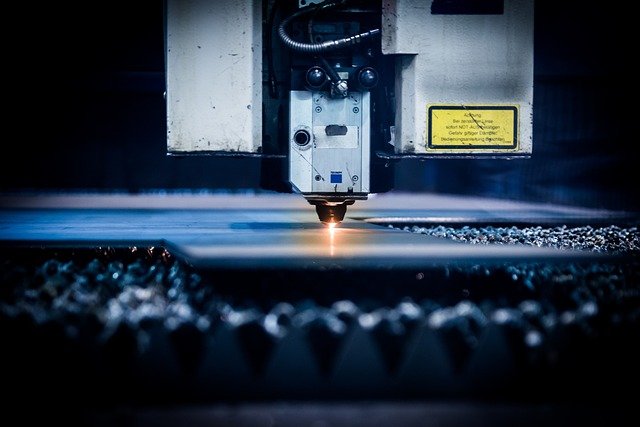Revolutionizing Industrial Cleaning: The Power of Laser Technology
Laser cleaning technology is transforming the landscape of industrial maintenance and restoration. This innovative approach to surface cleaning offers precision, efficiency, and environmental benefits that traditional methods struggle to match. As industries seek more effective and sustainable solutions, laser cleaning machines are emerging as a game-changing tool in various sectors.

The precision of laser cleaning allows for selective removal of surface layers, making it ideal for delicate or valuable items that require careful restoration. The technology can be finely tuned to address specific cleaning needs, adjusting parameters such as pulse duration, wavelength, and power to optimize the cleaning process for different materials and contaminants.
What are the advantages of laser cleaning machines?
Laser cleaning machines offer several advantages over conventional cleaning methods:
-
Precision: Lasers can target specific areas with exceptional accuracy, allowing for the removal of contaminants without affecting surrounding materials.
-
Non-contact: The process is entirely non-contact, eliminating the risk of mechanical wear or damage to the surface being cleaned.
-
Environmentally friendly: Laser cleaning requires no chemicals or abrasives, producing minimal waste and reducing environmental impact.
-
Versatility: These machines can clean a wide range of materials, including metals, plastics, stone, and even delicate surfaces like artifacts or electronics.
-
Efficiency: Laser cleaning is often faster and more thorough than traditional methods, potentially reducing downtime and labor costs.
Where is laser cleaning technology being applied?
Laser cleaning technology is finding applications across various industries:
-
Manufacturing: Removing rust, paint, and coatings from machinery and parts.
-
Automotive: Preparing surfaces for welding or painting, and cleaning engine components.
-
Aerospace: Cleaning and maintaining aircraft components and structures.
-
Conservation and restoration: Gently cleaning historical artifacts and artworks.
-
Electronics: Precisely cleaning circuit boards and sensitive components.
-
Construction: Removing graffiti, preparing surfaces for treatment, and restoring buildings.
What types of laser cleaning machines are available?
Laser cleaning machines come in various configurations to suit different industrial needs:
-
Handheld devices: Portable tools for on-site cleaning and small-scale applications.
-
Automated systems: Larger machines integrated into production lines for high-volume cleaning.
-
Robotic arms: Flexible systems capable of cleaning complex shapes and hard-to-reach areas.
-
Pulsed laser systems: Machines that use short, intense bursts of laser energy for precision cleaning.
-
Continuous wave lasers: Systems that provide a constant beam for larger area cleaning or ablation.
How does laser cleaning compare to traditional methods?
When comparing laser cleaning to traditional methods such as sandblasting, chemical cleaning, or manual scrubbing, several factors come into play:
-
Environmental impact: Laser cleaning produces minimal waste and doesn’t require harmful chemicals, making it more environmentally friendly.
-
Precision: Laser technology offers unparalleled accuracy in targeting specific areas or layers for cleaning.
-
Surface integrity: Unlike abrasive methods, laser cleaning doesn’t wear down the underlying surface, preserving the material’s integrity.
-
Operating costs: While initial investment may be higher, laser cleaning can reduce long-term costs through faster operation and lower consumable expenses.
-
Safety: Laser cleaning eliminates many of the safety hazards associated with chemical handling or abrasive particle inhalation.
What are the considerations when choosing a laser cleaning machine?
Selecting the right laser cleaning machine depends on several factors:
-
Material compatibility: Ensure the laser system is suitable for the materials you need to clean.
-
Power and speed requirements: Consider the scale of your cleaning needs and required throughput.
-
Portability: Determine whether you need a stationary system or a mobile solution for on-site work.
-
Safety features: Look for machines with appropriate safety mechanisms and certifications.
-
Integration capabilities: For industrial applications, consider how the system will fit into existing production lines.
-
Support and maintenance: Evaluate the availability of technical support and maintenance services.
Laser cleaning technology represents a significant advancement in industrial cleaning tools. By offering a precise, efficient, and environmentally friendly alternative to traditional methods, these machines are set to play an increasingly important role in various industries. As the technology continues to evolve, we can expect to see even more innovative applications and improvements in laser cleaning capabilities, further solidifying its position as a crucial tool in modern industrial processes.






